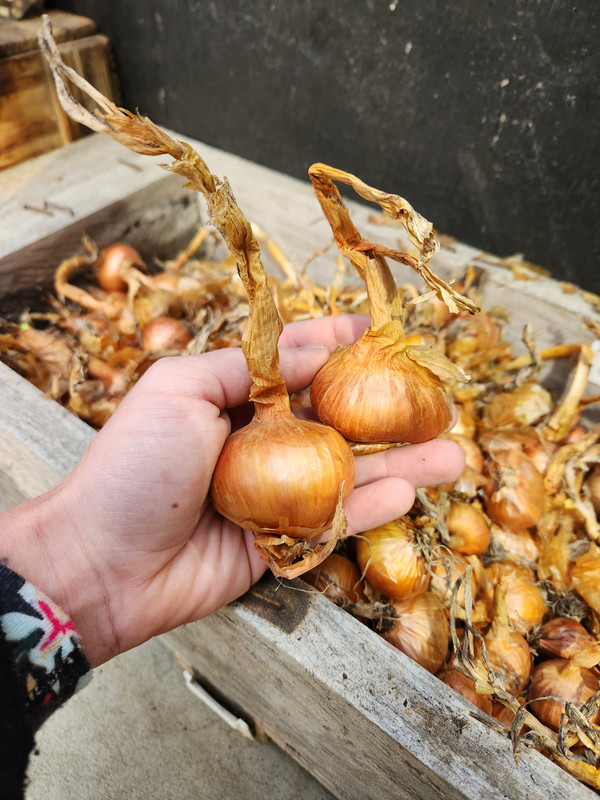Grow Your Own Potato Onions in Tasmania
If you’re looking to grow something a little different this season that’s both low-maintenance and productive, potato onions might just be the hidden gem your garden needs. With their rich flavour, excellent storage life, and ability to multiply underground, potato onions are perfect for Tasmanian gardeners who love heritage varieties and no-fuss growing.
What are Potato Onions?
Potato onions (Allium cepa var. aggregatum) are part of the shallot family but grow more like garlic. Rather than being grown from seed, they’re planted as bulbs, which divide and multiply underground—similar to how potatoes grow, hence the name.
They’ve been cherished for generations in old cottage gardens but fell out of commercial favour due to their unpredictable size. Now, with a surge in interest in permaculture, heirlooms, and sustainable living, these resilient alliums are enjoying a well-deserved revival.
Why Grow Potato Onions in Tasmania?
Tasmania’s cool, temperate climate is ideal for potato onions. They benefit from a cold winter to help trigger strong root development and bulb multiplication. Plus, they’re incredibly hardy—resisting most pests and diseases that can trouble more commonly grown onions.
Once established, they’re drought-tolerant and require very little fuss, making them a great addition to both productive kitchen gardens and permaculture zones.
When to Plant in Tasmania
The best time to plant potato onions in Tasmania is from June-early August, If you’ve missed that window, you can try planting in late winter, but you may get a smaller yield. Unlike traditional onions, they don’t rely on day length to form bulbs, so they’re more forgiving in Tasmania’s variable climate.
How to Plant
-
Choose a sunny, well-drained spot – Raised beds or rows on mounded soil work well, especially in heavier soils.
-
Prepare the soil – Like other alliums, potato onions appreciate a loose, fertile soil enriched with compost. Avoid fresh manure, which can cause rot.
-
Plant bulbs 15–20cm apart – Push bulbs into the soil with the tips just poking through the surface. Space rows about 20-30cm apart.
-
Mulch with care – If your site is prone to staying damp in winter, avoid heavy mulching straight after planting. Instead, wait until spring growth begins and apply a light mulch to suppress weeds and retain moisture. In wetter areas, skipping mulch altogether may give better results.
-
Water sparingly – Once established, potato onions only need occasional watering. Avoid overwatering, which can lead to fungal problems.
-
Feed lightly – A side-dress of blood and bone or a seaweed-based tonic in early spring is usually enough.
Harvesting and Storage
By mid to early summer, you’ll notice the tops starting to brown and fall over—this is your cue to harvest. Gently lift the bulbs with a fork and allow them to dry in a sunny, airy spot for 7–10 days.

Once cured, store them in a cool, dark place with good airflow. Properly dried, potato onions can store for 6–10 months, making them one of the best keepers for the home gardener.
The Self-Sufficient Bonus
One of the most satisfying parts of growing potato onions is their ability to provide your own planting stock year after year. Just set aside a handful of your best bulbs to replant next season, and you’ve got a perennial pantry staple with minimal ongoing cost.
Happy Gardening!

